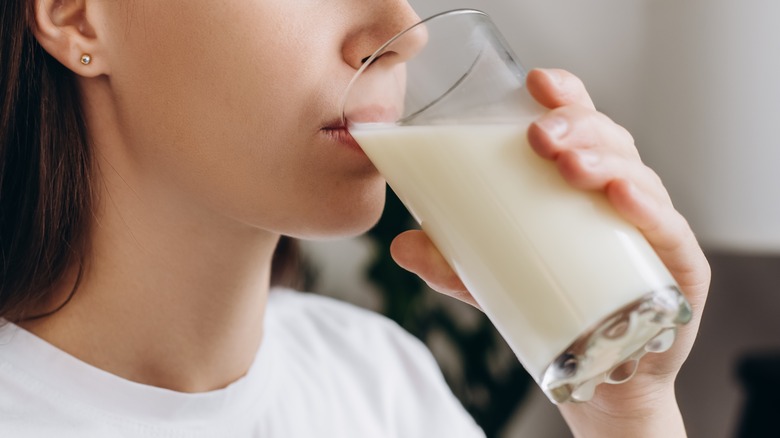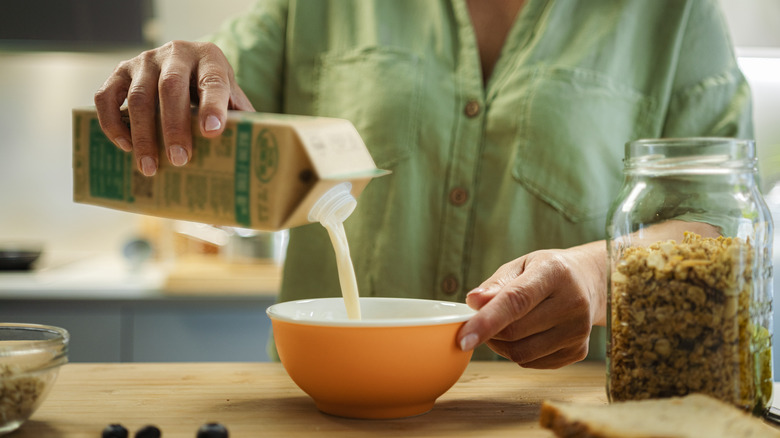How Long Does Milk Last Before Going Bad?
Milk is an essential ingredient in a number of dishes, but it can be temperamental in terms of storage and how long it lasts. Dairy products as a whole need constant refrigeration in order to stay fresh, and milk is no exception. Even when you purchase a new carton from the supermarket and keep it extra cold, its shelf life is still relatively short. The printed expiration date on the carton or gallon jug is important here because it serves as a great guideline for how long you can consume milk.
Milk should last until its printed expiration date – normally somewhere around two weeks from when you buy it — assuming it's been kept refrigerated the whole time. You can probably get away with drinking it even a few days after that date has passed, but milk has a different shelf life compared to other dairy products, like cream, so make sure you're aware of what you're using to better understand how long it will last.
Milk's expiration date is important
With plenty of products, expiration dates are merely a guideline. You can often use your best judgment to know whether a product is still good even long after its label says otherwise. Milk is only kind of the same way. The expiration date printed on your milk is going to give you a relatively clear picture because there's typically little leeway with that date compared to other products. Once you open milk, it might last up to three days past the expiration date while unopened milk has a longer shelf life, lasting up to seven days past its expiration date. So, at most, your milk will last around three weeks once you buy it.
When using milk, a study in the Journal of Dairy Research suggests that its rate of spoiling doesn't matter what its fat content is — the shelf life of commercially available milk remains about the same whether it's whole milk or skim. However, that shelf life does differ for much higher-fat dairy products, such as heavy cream, which lasts even longer than milk — about a month after it's opened.
How to tell if milk has gone bad
There are telltale signs for knowing whether you should toss that carton of milk, regardless of what its expiration date says. Smell, texture, and taste are the three biggest clues, but you'll likely want to save taste for last if you can help it. If you open a container of milk, and it has a noticeably sour or sewage-like smell, throw it away immediately (this can also happen before the expiration date if the milk wasn't properly stored). As for texture, if you've ever heard of milk turning "chunky," just know that's a real thing. Any change in the milk's texture is a major sign to throw it away. Finally, you can taste a small amount to check if it has a sour flavor. While it won't be a fun experience, the Missouri Poison Center notes you likely won't get sick from a small sip but should not drink bad milk in large quantities.
In terms of proper storage, milk should be refrigerated at all times and kept in the coldest part of the refrigerator, such as the bottom shelf toward the back. Once you remove milk from its container and place it at room temperature in a glass or serving container, don't mix it back in with the cold milk as this could lead to quicker spoilage.


